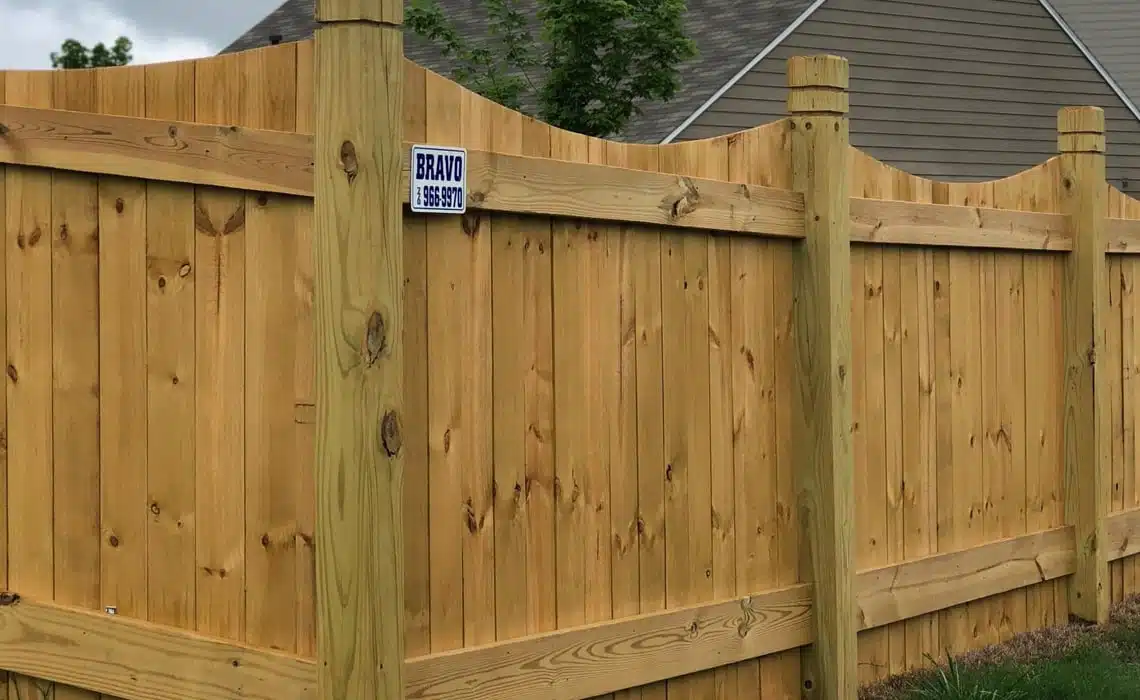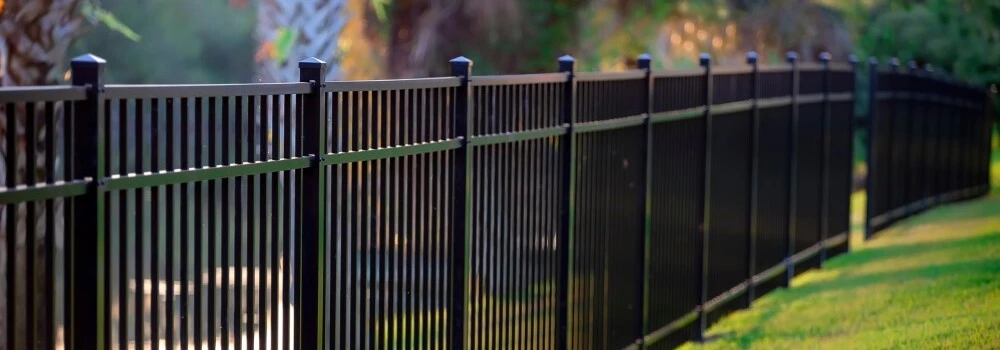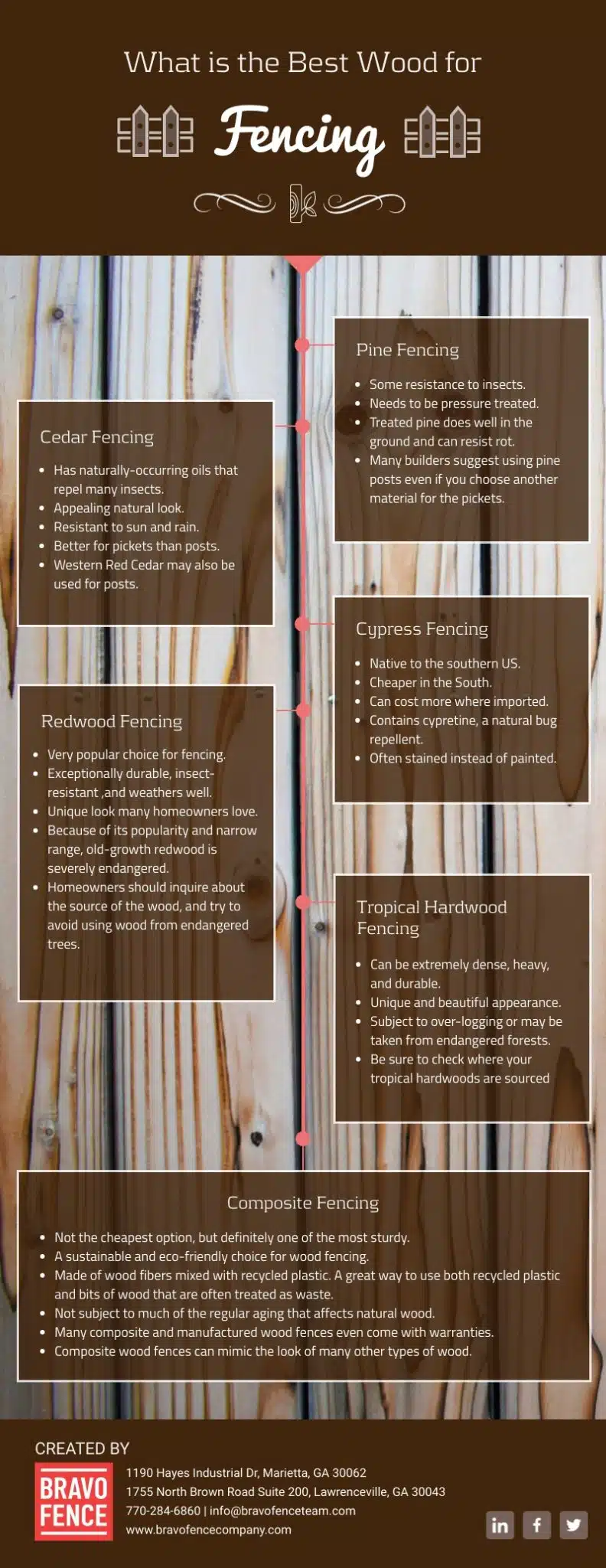
What is the Best Wood for Fencing?
There are many materials to choose from for a new fence. But many homeowners are determined to stick with wood for its classic, natural look. We agree that wood is an excellent choice for a residential or commercial fence. However, once you’ve decided to go with wood, you still have more choices to make. The two most important decisions you need to make with a wood fence are what type of wood you want and how you will finish it. You may be wondering which is the best wood for fencing. Like most things in life, there is no single best. To find the right wood for your fence, you need to look at the features of each material and finish and decide what works best for you.
Why Choose a Wood Fence
There are many options when it comes to choosing a fence. Some people love the historic look of wrought iron. Others love the sleek modernism of steel fencing. Others like the simplicity and low cost of PVC. But there is something to be said for the classic simplicity of a wooden fence.
Wood is probably the oldest material for fences, and it has continued to be a favorite. Wood also offers many, many options. You can choose practically any shape and style. Wood is easy to work with and, when appropriately treated, holds up to the elements pretty well.
If you’re looking for a traditional style for your backyard, wood is ideal. Wooden fences remind people of the fences they had as kids. A tall wooden privacy fence is one of the hallmarks of suburban living. If you want something more rural, a split rail fence is an excellent choice. Or, if the American dream is what you’re going for, there’s nothing more perfect than a traditional wood picket fence.
Wood is exceptionally versatile. It can be painted, stained, or treated with a clear finish to bring out its natural beauty. If you like, you could even leave your fence untreated to get that faded gray look of wood exposed to the elements.
But with all these choices, what is the best wood for fencing? Let’s take a look at some common (and less common) choices to see how they stack up.
Pine Fencing
Pine is a popular choice for wood fencing. It is soft and easy to work with, and it is also one of the cheapest options. Pine has some natural resistance to insects. But in almost every case, pine for outdoor fencing needs to be pressure treated. When wood is pressure treated, chemical gases are forced into the wood under high pressure. The chemicals help the wood withstand insects, moisture, and other weather-related dangers.
Treated pine does well in the ground and can resist rot. For this reason, many builders suggest using pine posts even if you choose another material for the pickets.
Cedar Fencing
Cedar is a good mid-price-range choice for a wooden fence. It has naturally-occurring oils that repel many insects, making it a sturdy choice for outdoor use. Cedar also has an appealing natural look. Many homeowners choose to stain their cedar fences instead of painting them. Staining protects the wood but also lets its natural beauty show through. Cedar fencing is more expensive than low-range pine. Cedar fences are often made up of cedar pickets with treated pine posts. Decay-resistant pine posts are better in the ground, while cedar is most resistant to sun and rain. However, some more expensive types of cedar, notably Western Red Cedar, may also be used for posts.
Cypress Fencing
Cypress is native to the southern United States. That makes it cheaper in the South and more expensive in other parts of the country, due to shipping costs. In areas where it is native, cypress can cost similar to cedar. In areas where it needs to be imported, it can cost significantly more.
Cypress is a great choice for fencing because it contains cypretine, a natural bug repellent. Its resistance to insects means less damage over time. Like cedar, many homeowners choose cypress for the look of the wood. To preserve its natural beauty, builders often stain instead of paint cypress fences. After staining, a clear sealer is added to protect the wood from the elements.
Redwood Fencing
Redwood is a popular choice for wooden fencing. It is often considered the best wood for fencing, and certainly one of the most common, although that designation is dependent on many factors. What makes it so appealing is that redwood is exceptionally durable. It is insect-resistant and weathers well. It also has a unique look that many homeowners love. Redwood is one of the more expensive options for wood fencing.
Redwood has a very narrow natural range. In the U.S., it is native only to the western slope of the Sierra Nevada mountain range and the coastal areas of Northern California. Outside of the U.S., redwoods are only native in a small region of China. As a species, redwoods are the largest trees in the world. Due to the size of the trees and the quality of the wood, redwood has long been favored as a source of lumber. Because of its popularity and narrow range, old-growth redwood is severely endangered. Homeowners choosing redwood for their fences should inquire about the source of the wood, and try to avoid using wood from endangered trees.
Tropical Hardwood Fencing
A variety of tropical hardwoods are available for fencing. Some of these woods are extremely dense, heavy, and durable. Homeowners choose them for those qualities, as well as their unique and beautiful appearance. But these woods are not cheap. They are actually the most expensive option for a wooden fence. Similar to redwood, some tropical hardwoods are subject to over-logging or may be taken from endangered forests. Be sure to check where your tropical hardwoods are coming from.
Composite Fencing
Composite fencing is one of the most eco-friendly choices for wood fencing. It is made of wood fibers mixed with recycled plastic, and it’s a great way to use both recycled plastic and bits of wood that are often treated as waste. It is not the absolute cheapest option, but it is definitely one of the most sturdy. Due to its plastic content, composite or manufactured wood is not subject to much of the regular aging that affects natural wood. Many composite and manufactured wood fences even come with warranties. Because it is manufactured, composite wood fences can mimic the look of many other types of wood.
Choosing the Best Wood for Fencing
Which type of wood you select for your fence is a personal choice. The best wood for your situation must take into account your budget, what look you want, and the local climate.
In mild climates, with relatively small shifts in temperature and little severe weather, durability is less of an issue. In regions with significant temperature swings, freezing winters, blazing hot sun, or severe storms and wind, durability is a much bigger concern.
If you are trying to save money in the short-term, pine is a good choice. But if you want to spend more now to avoid maintenance and replacement costs down the line, redwood may be more desirable. If you plan to move in the near future, it may not be necessary to install a fence that will last for decades. But if you plan to stay in your home for a long time, a fence that will stand the test of time is a good investment.
The local cost of materials can also differ from region to region, so what makes sense in one part of the country may be too expensive in another. Other local considerations include the types of fencing in your neighborhood and even local HOA regulations.
If you’re considering a new fence and want to learn more about your options, contact Bravo Fence Company for a consultation. They can help you narrow down your choices and guide you to the best wood for your fence.


